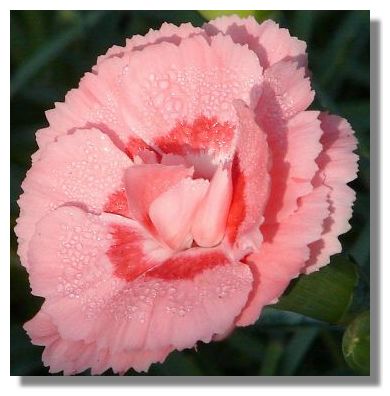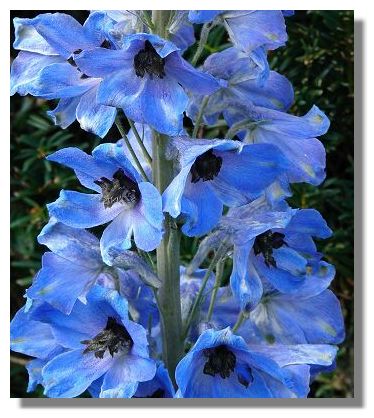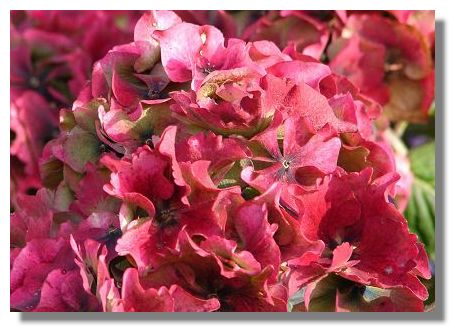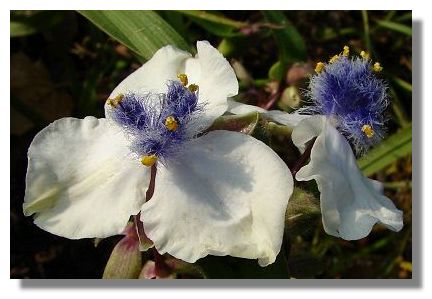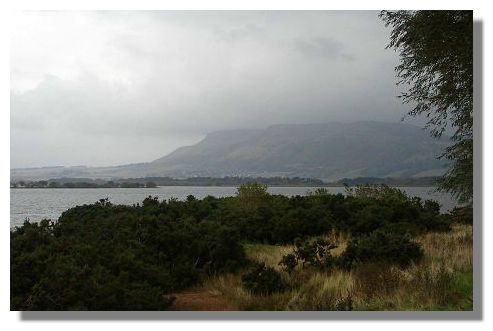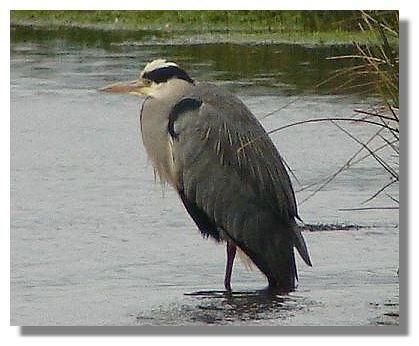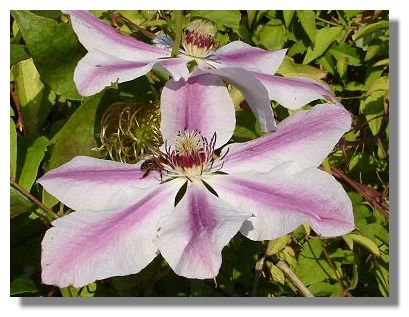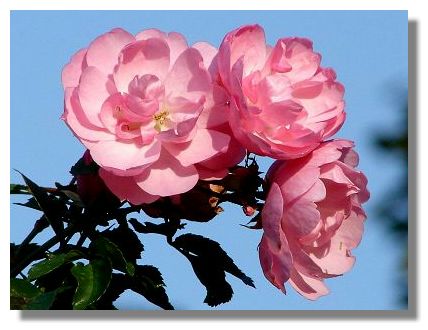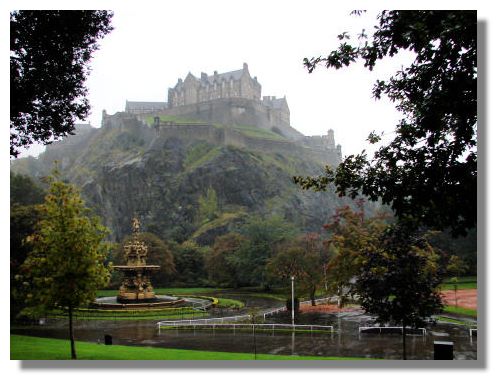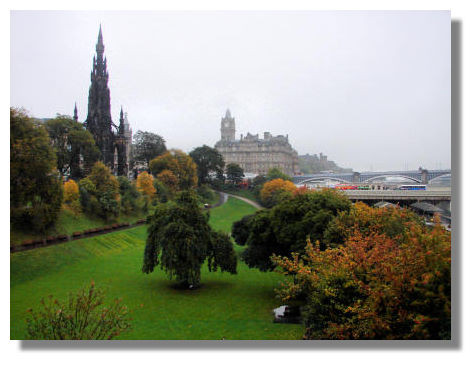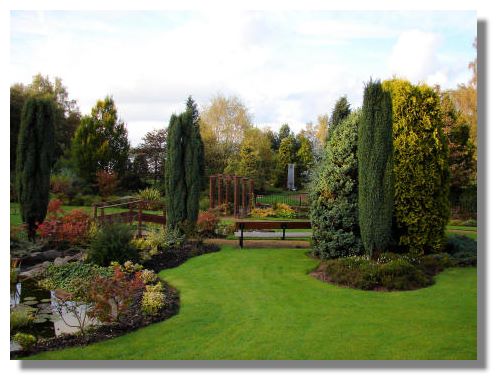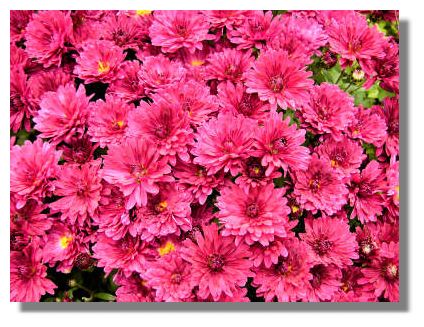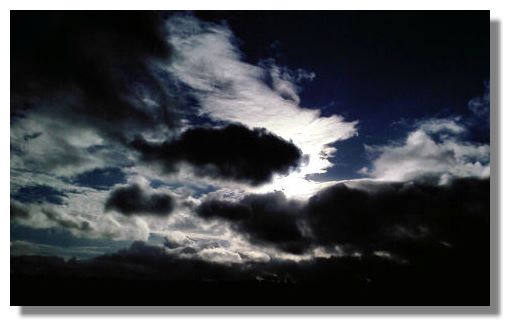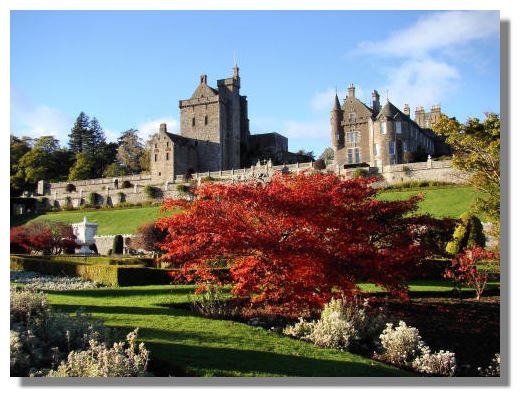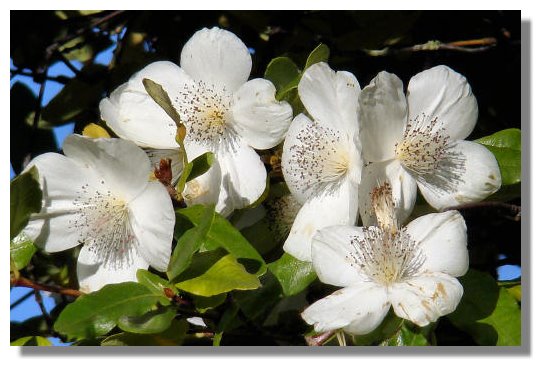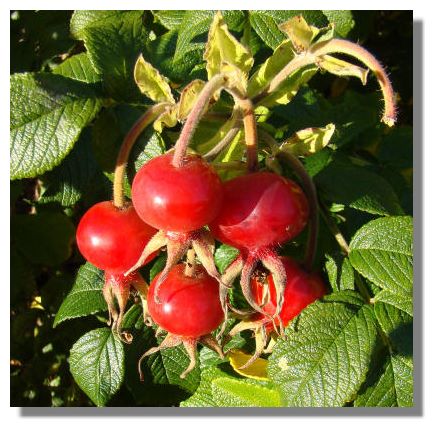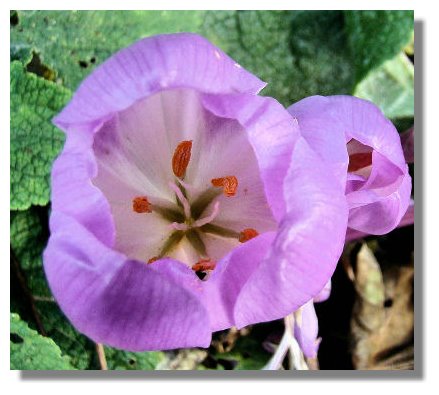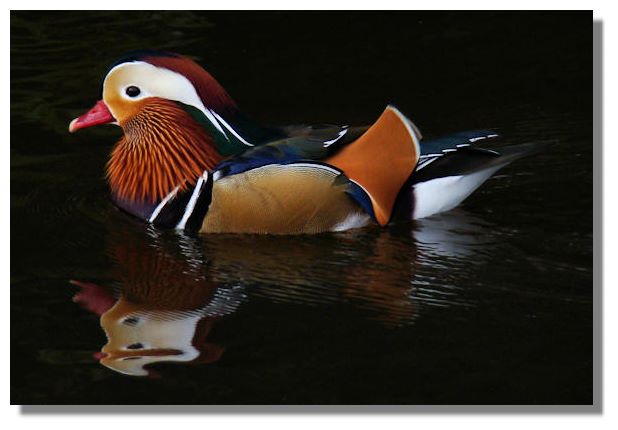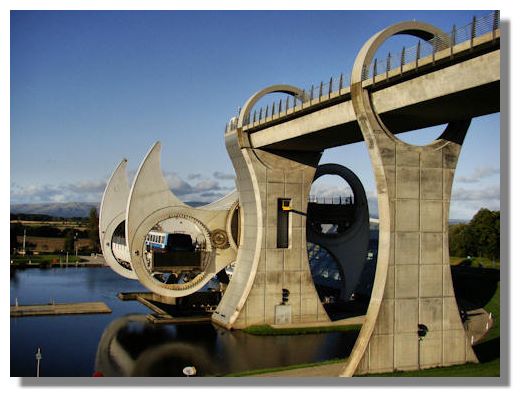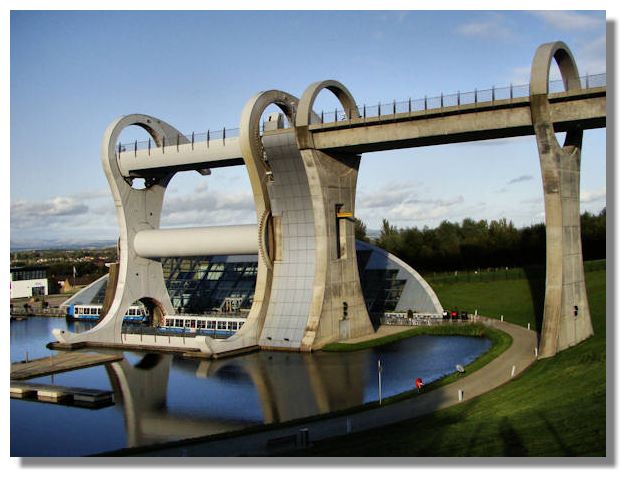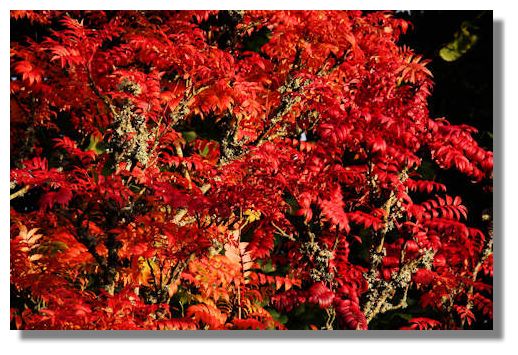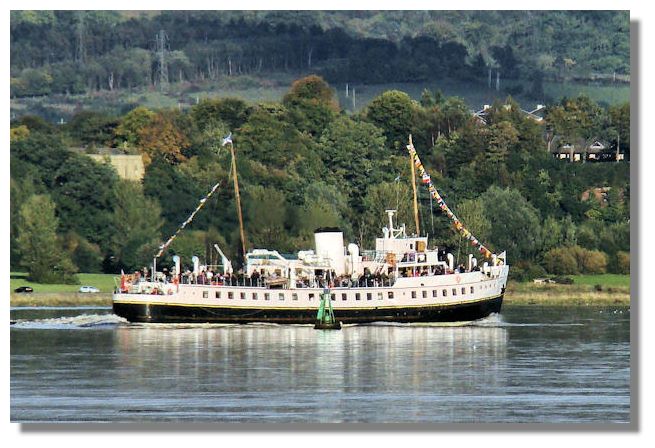With overnight temperatures falling, by morning there is often a fair amount of dew on grass and plants. In sheltered spots, away from the sun, some of that moisture can remain - as with this Dianthus growing in the "Smelly Garden" at Finlaystone Country Estate on the Renfrewshire/Inverclyde border.
Tall, stately, delphiniums are usually found at the back of a summer border and the ones at Finlaystone created a dramatic display a few months ago. They were then cut back after flowering - and a few promptly produced some more shoots to give a second display in October.
While some hydrangea blooms just turn brown after flowering, others gradually change into various shades of red, as in this picture.
Given the right conditions, tradescantia (also known as spider lily) will continue to produce flowers until the first frost.
This picture taken near Kinross of the low clouds settling on the Lomond Hills and Loch Leven in the foreground is quite atmospheric!
This grey heron at the RSPB Vane Farm wildlife reserve looks as though he/she is a bit disconsolate in the gloomy, wet weather. But in fact herons often stand like this. When hunting for food, the neck is usually elongated, ready to strike at any passing fish. Alternatively, it paddles through shallow water, stamping its feet to stir up flat fish, crabs and larvae.
This Clematis growing on a wall in Finlaystone Country Estate has been producing a succession of large blooms since the summer. Although there has been a lot of dull days in recent weeks, the temperature has remained high for the time of year.
The flowers on this rambling rose, reaching into the blue sky, may not last for much longer, but we can enjoy it while it lasts.
There are times when that mist around Edinburgh Castle makes it disappear from Princes Street below. On this occasion, while the rain was quite heavy, the clouds were not quite low enough to create that effect. The Ross Fountain was not flowing on this occasion - but with all the rain, there wasn't really any need for it - and few people passing by to see it!
At one time, the area below Edinburgh Castle and part of its High Street (leading to the Palace of Holyroodhouse down the "Royal Mile") was a loch, which was used as a sewer for the Old Town. Thousands of oyster shells (a cheap food in the old days) have been found in excavations below. Nowadays, of course, the smart shops in Princes Street have a unique view over the gardens, with the castle above.
The soaring monument to Sir Walter Scott in Princes Street Gardens stands out against the grey sky, while the clock tower above the Balmoral Hotel has a hint of mist around it. The colours of autumn are well to the fore in this picture. The clock is always kept two minutes fast - to encourage rail travellers heading for the adjacent Waverley Station to hurry up!
It was a bit brighter here at Drumpellier Country Park, with a few patches of blue in the sky, looking towards the "Peace Garden". In medieval times, Drumpellier was the farming grange of the Monks of Newbattle Abbey, which gives rise to the name of Monklands, the historical name for the surrounding area.
Even in mid-October, button chrysanthemums provide a splash of colour in the Drumpellier gardens. Many years ago chrysanthemums were moved by botanists and horticulturalists into the genus "Dendranthema." But although professional growers in the UK adopted that name - nobody else did. Eventually, after much confusion, the plants were "returned" to the original genus and are now (thank goodness) accepted everywhere as chrysanthemums!
The sun, low in the afternoon sky, is trying hard to peek out from behind the clouds here!
Just as the summer flowers are fading, the formal garden in front of Drummond Castle in Perthshire bursts into colour again with the autumn leaves of fiery acer trees.
Eucryphia originated in Chile and Australia, which may explain why their flowers appear in the late autumn in Scotland. Some varieties of Eucryphia can grow into tall trees and their mass of brilliant white petals shine out at a time when the leaves of many trees around them are turning brown.
The hips of Rosa Rugosa can be large, 2–3 cm (over an inch) in diameter. They are often shorter than their diameter, not elongated like most other rose hips. Even in the middle of October, there can still be flowers of Rosa Rugosa in bloom beside the hips.
Nasturtium, (literally "nose-twister" or "nose-tweaker") is a genus of roughly 80 species of annual and perennial herbaceous flowering plants known as Tropaeolum ("Trophy"). Caterpillars of the Large White butterfly are particularly fond of eating Nasturtium leaves. They have showy, often intensely bright flowers which are edible and can be added to salads, creating an ornamental effect and they add a slightly peppery taste, similar to watercress.
For obvious reasons, Colchicum are often referred to as "Autumn Crocus". Its purple, pink or white flowers appear from September to October. Its dark green leaves are only produced after flowering - hence its other common name of "naked lady".
This Mandarin Duck is an occasional visitor to the Swan Pond in Culzean Castle Country Park in South Ayrshire. In the UK, it is mainly confined to south east England so visitors to Culzean are often surprised when they see it and many don't know its name. But it is unmistakable, with its red bill, large white crescent above the eye and reddish face and "whiskers". The chest is purple with two vertical white bars and the flanks are ruddy, with two orange "sails" at the back. This is the male (drake), of course - the female is an unremarkable light brown.
As part of the multi-million pound renovation of the Forth and Clyde Canal (which links the two rivers on each side of central Scotland) and the Union Canal (which branches from the main canal near Falkirk and heads to Edinburgh), it was decided to replace the system of locks connecting the two waterways with a new section of canal and a rotating boat lift with a novel design. The "Falkirk Wheel" is the only rotating boat lift of its kind in the world and is regarded as an engineering landmark for Scotland. The difference in levels at that point is 24 metres (79 ft), roughly equivalent to the height of an eight storey building. It was opened on 24 May 2002 by Queen Elizabeth II as part of her Golden Jubilee celebrations. The picture here shows the arms descending, with a canal boat in the water-filled cradle.
The Falkirk Wheel's two opposing arms (which extend 15 metres from the central axis) were designed to mimic a Celtic double-headed axe. As the arms move up and down, the containers with the canal boats are kept level. This picture - taken a few minutes after the one above - shows the canal boat now down at the level of the Forth and Clyde Canal. You can see a time-lapse photograph of the whole process at Wikipedia.
The russet colours of this Rowan tree (Mountain Ash) in Culzean Castle Country Park were made even redder by an evening sun which lit up the glorious autumn colours. The tree is near one of the main car parks and many visitors were stopping to take its photograph!
There is a long tradition in Glasgow of sailing "doon the watter" (down the water) of the river Clyde and such cruises are still popular. The Motor Vessel "Balmoral" is not quite in the same class as the paddle steamer "Waverley" (the last ocean-going paddle steamer in the world). Even so, she was built only three years after the Waverley and sailed mainly along the south coast of England. In the 1980s, after a project to use her as a floating restaurant in Dundee failed, it looked as though the Balmoral would head to the scrapyards. Instead, she was bought by the owners of the Waverley as a sister ship. The Balmoral spends time on the south coast of England as well as cruising down the Clyde. She can accommodate up to 750 passengers and there is a self-service restaurant, two licensed bars and an observation lounge.
There is a herd of red deer in Culzean Castle Country Park and in the last year the National Trust for Scotland brought in a stag which was a very pale colour, almost white on its neck and rear quarters, rather than the more usual reddish brown. Its offspring come in a variety of shades - including this young reddish stag and the pale-coloured hind.
If you want to look back at other editions of these photos of Scotland week by week, there is an Index Page
